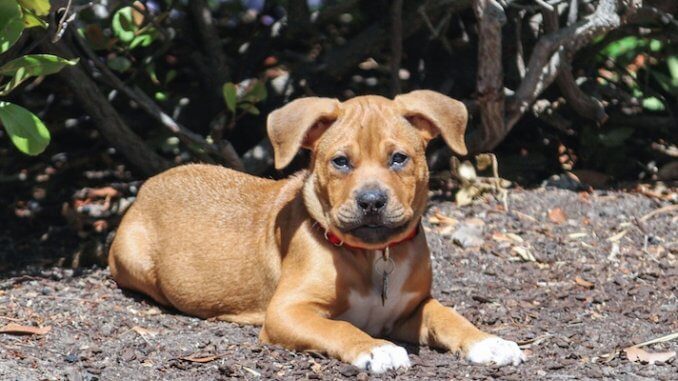
Are you considering adding a furry companion to your family and love the idea of a large dog with a personality to match? Meet the Pitbull Boxer Mix, also affectionately known as a Bullboxer. This unique breed has the spirited nature of the American Pit Bull Terrier and the playful demeanor of a Boxer.
Historically, Pit Bulls were bred for blood sports, while Boxers earned their stripes as working dogs. But don’t let their rugged pasts fool you. When these breeds are combined, and given the right early training and socialization, a loyal, playful, and energetic family companion emerges. Does that sound like a good fit for your household?
Before you get too excited, it’s important to ensure that owning a Bullboxer is legal in your area, as breed restrictions can apply. Intrigued? I’ll guide you through the joys and challenges of daily life with a Pit Bull Boxer Mix.
TABLE OF CONTENTS
- Pitbull Boxer Mix Quick Summary
- Bullboxer Parent Breeds
- Physical Characteristics of a Pitoxer
- Pit Bull Boxer Mix Personality and Temperament
- Pit Bull Boxer Mix Puppy
- Boxer and Pit Bull Mix Care Guide
- Pitbull Boxer Mix Health Issues
- FAQs about the Pitbull Boxer
- Loyal, Energetic, and Highly Trainable
- Other American Pit Bull Terrier and Boxer Mixes
Pitbull Boxer Mix Quick Summary
Bullboxer Parent Breeds

As a hybrid dog, it’s intriguing to see which traits Pitoxers inherit more strongly—will you see that iconic Pitbull smile, or will you be charmed by the Boxer’s playful ‘paw’ gesture, a nod to their name’s origin?
Although crossbreeds like the Bullboxer aren’t registered with major Kennel Clubs, this mix has been recognized by several registries, including the International Designer Canine Registry, the American Canine Hybrid Club, and the Designer Breed Registry.
The exact origins of the Boxer Pit Bull mix are a bit murky, but interest in this spirited mix started to climb around 2009. The Boxer made its American Kennel Club debut in 1904, but it wasn’t until the 1950s that their popularity soared. Considering Pitbull Terriers made their way to the U.S. in the early 20th Century, it’s not surprising that these two impressive breeds were eventually combined to create something special.
On that note, let’s look at the parent breeds in more detail.
American Pitbull Terrier
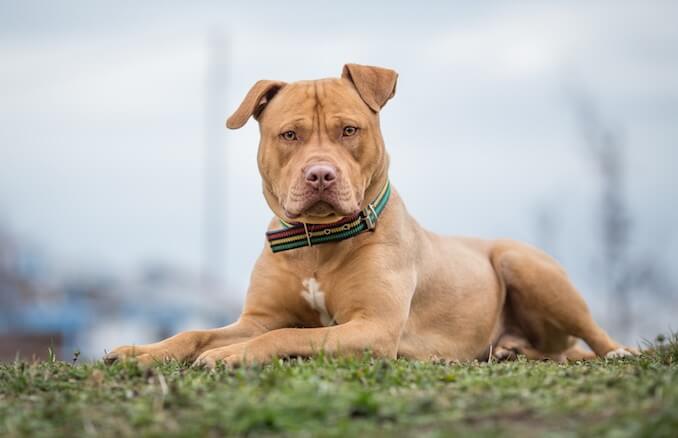
Origin
The term Pit Bull refers to a class of dogs, not a single breed. This class includes the Staffordshire Bull Terrier, American Bulldog, American Staffordshire Terrier, and the American Pit Bull Terrier. Often in the Pit Bull Boxers, either a brindle or red nose Pit Bull steps up as the parent. These breeds trace their origins to Britain, where they were bred for strength and ferocity to compete in brutal sports like bear and bull-baiting.
Physical Characteristics
Among the Pit Bull class, the American Pit Bull Terrier typically stands a bit taller than its cousins. Despite slight differences in stature, they share a robust and muscular build, crafted over generations for physical prowess and durability.
Temperament and Behavior
Historically, Pit Bulls were used in savage sports, but what’s often overlooked is their unwavering loyalty, eagerness to please, and intelligence. These qualities make them incredibly responsive to commands, which is why they can excel in the wrong hands. However, when raised with love and proper guidance, Pit Bulls reveal their true nature. They transform into the happiest, most easy-going dogs. Excelling in obedience and agility, they become perfect family companions, showing just how loving and adaptable they are despite their fierce ancestry. Their history of illegal dog fighting in the US is a stark contrast to the potential they have to be loving, integral members of the family.
Boxer
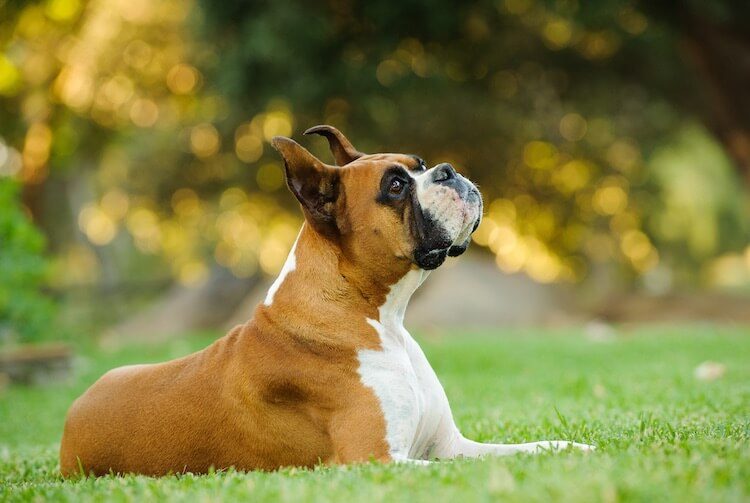
Origin
I found out that this breed has roots deeply embedded in Germany from the late 19th Century. They descend from the now-extinct Bullenbeisser, a dog breed once used for hunting large game like bear and boar. Imagine the strength and agility needed for a dog to hold down such formidable creatures until the hunters could catch up! This was the Boxer’s main job back in the day.
As times changed and the need for hunting large game dwindled, the Boxer found new roles. They adapted to life alongside humans, taking on tasks like cattle herding, cart pulling, and even serving as one of the first police dogs in Germany. These roles required more than just brawn; they needed intelligence, protectiveness, and steady temperament, which the Boxers had in spades.
The name “Boxer” likely comes from their unique style of play and interaction, where they use their front paws much like a boxer in the ring, playfully sparring. Though their days of wild hunts are long behind them, Boxers have become beloved family pets, celebrated for their boundless energy and deep loyalty to their families. They’re truly a testament to how versatile and adaptable dogs can be.
Physical Characteristics
One striking physical trait of the Boxer is how they “spar” using their front paws, much like a boxer in the ring—hence their name. Watching them interact with other dogs is a treat; they often use their front paws to play and defend, showing off their distinctive style and agility.
Temperament and Behavior
There’s never a dull moment with a Boxer around. Maybe that’s putting it mildly—being bowled over by a bouncing Boxer is almost a rite of passage for owners! Their boundless energy and spirited nature make them immensely popular, consistently ranking them in the American Kennel Club’s top 10 for popularity. Their success as working dogs and family pets isn’t just due to their intelligence and energy, but also their playful and loving temperament.
Physical Characteristics of a Pitoxer
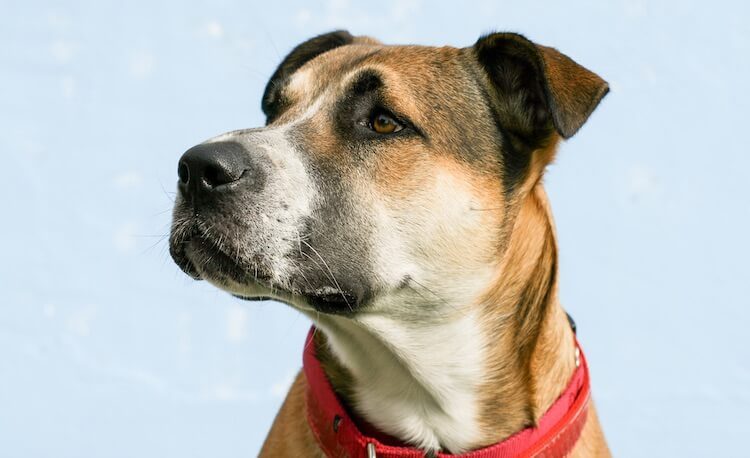
When you look at a Pit Bull Boxer Mix, you’re essentially seeing a blend of two robust breeds, each bringing its own unique set of characteristics to the table. Let’s delve into what makes the physical makeup of these dogs so fascinating.
Coat
Both parent breeds of this mix, the Pit Bull and the Boxer, sport short, smooth coats. This almost guarantees that your Pit Bull Boxer Mix will inherit the same type of coat. The great advantage here is the low maintenance. Brushing the coat two to three times a week is more than enough to keep it shiny and healthy.
Color Variations
The color palette of the Pit Bull Boxer Mix is quite broad, including black, red, white, grey, brindle, blue, fawn, brown, and tan. However, you’ll find that fawn and brindle are more common, echoing the typical colors of the brindle Pit Bull. Each puppy is a unique blend, making every one of them a delightful surprise in terms of appearance.
Facial Structure
One noticeable feature where the Pit Bull Boxer Mix often differs from the Boxer is in the snout. Thanks to the Pit Bull’s elongated muzzle, this mix tends to have a longer snout. This is a health boon, as it steers them clear of the typical brachycephalic issues faced by purebred Boxers, who have much shorter muzzles.
Size and Build
The size of a Pit Bull Boxer Mix can vary quite significantly, with some as petite as 17 inches in height to others towering up to 25 inches. They can weigh anywhere between 30 and 80 pounds. The size and build of their Pit Bull and Boxer parents are often good indicators of what to expect, so it’s a bit of a genetic lottery. From my experience, these dogs carry the heft and muscle of their lineage, standing as proud examples of their robust heritage.
Pit Bull Boxer Mix Personality and Temperament
From what I’ve learned about the Pit Bull Boxer Mix, it’s clear that when you choose a reputable breeder and provide early training and socialization, you truly get the best of both worlds with this lively mix.
Energy and Activity Needs
I’ve noticed that the Pit Bull Boxer Mix is brimming with energy, making them ideal for families that love the great outdoors. Their need for mental stimulation is as crucial as their physical exercise needs because boredom can quickly lead to mischief. As such, they are not well-suited to being left alone for long periods. They can develop separation anxiety, which might lead to distress and potentially destructive behavior. If there’s a need to leave them alone, arranging for a dog walker or some form of company is a good strategy to keep them calm and engaged.
Social Nature
This mix is not just dependable and bright but is deeply family-oriented. They thrive in a bustling family environment, pouring their whole heart into the family dynamic. This is a breed that resonates with warmth and loyalty, making them perfect companions for those who cherish the closeness of family ties.
When socialized from a young age, the Pit Bull Boxer Mix is wonderfully sociable. They make fast friends with other dogs, people, and even other pets in the home. Their devotion to family extends to children of all ages, though their robust size and boundless energy mean it’s wise to supervise interactions with smaller children to prevent accidental bumps.
This breed often inherits the protective nature typical of many Pit Bull mixes. They are alert and watchful, ready to bark to alert you if something seems off. Aside from their duty as watchful guardians, they are surprisingly quiet—except for their notable snoring! Particularly if they inherit the Boxer’s shorter snout, you might find yourself listening to some rather loud snores, but that’s just part of the charm with these dogs.
Pit Bull Boxer Mix Puppy
If you’re thinking about bringing one of these puppies into your home, you might be wondering about the cost. From what I’ve seen, prices for these puppies generally range between $500 and $1000, varying based on the breeder’s reputation and the puppy’s lineage.
It doesn’t significantly matter which breed—Boxer or Pit Bull—is the sire or dam when it comes to predicting your puppy’s future size. However, a good indicator is always to look at the size of the parents. Typically, a Boxer Pit Bull mix will weigh anywhere from 30 to 80 pounds. A puppy weighing between 20 to 25 pounds at three months old will likely mature to between 50 and 70 pounds by their first birthday.
Your Pit Bull Boxer mix puppy will generally reach full size between 12 and 18 months old. Their ultimate size will also depend on the specific type of Pit Bull in the mix, especially if the parent isn’t an American Pit Bull Terrier, which is the largest of the Pit types.
These puppies can sometimes lose focus easily due to their boisterous nature. Training them requires your full attention and a bit of patience—but don’t let that deter you; it’s an incredibly rewarding experience.
Boxer and Pit Bull Mix Care Guide
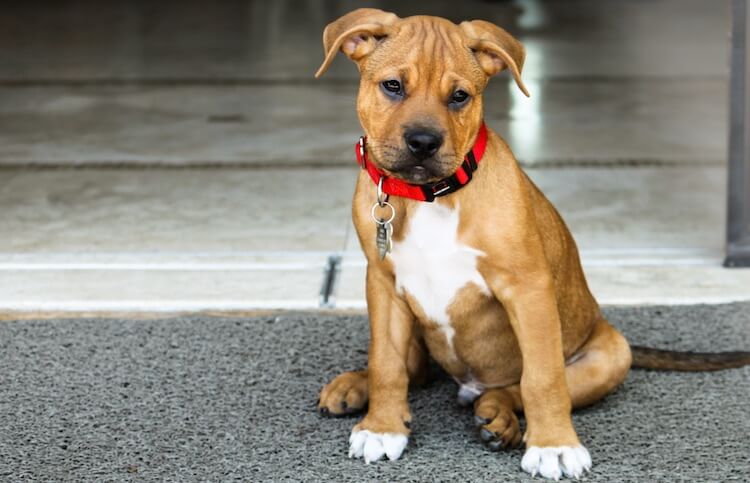
Best suited to active families, who are super energetic, this mix needs exercise every day. To get the energy for such activity, they eat a lot of food too. Let us discuss their care needs in detail.
Feeding
When it comes to feeding a Boxer Pitbull Mix, one of the most intriguing challenges I’ve come across is the uncertainty of their adult size due to their hybrid nature. This uncertainty can make establishing a consistent feeding routine a bit tricky.
From what I’ve learned, your veterinarian is your best resource for estimating your puppy’s adult size, which is crucial for setting up a feeding plan. Puppies are generally fed based on their expected adult weight. Monitoring your puppy’s growth closely will help you adjust his diet as needed to prevent overfeeding or underfeeding.
Monitoring and Managing Weight
Keeping an eye on your dog’s weight is key. Ideally, he should have a visible waistline and, when viewed from above, an hourglass figure. You should be able to feel his ribs without them being prominently visible. If his ribs are showing, it’s a sign that you need to increase his food intake. Conversely, if you can’t feel his ribs at all, it may be time to cut back.
Given their high energy levels, the diet of a Boxer Pitbull Mix must meet its daily nutritional needs. I suggest ensuring that at least 18% of his adult diet is protein and at least 5% is fat, which provides the necessary energy for his active lifestyle.
Treats
Training a sometimes stubborn Boxer Pitbull Mix can mean using quite a few treats, which I’ve noticed can quickly add up in terms of calories. It’s important to consider how treats fit into his daily calorie allowance. Opting for low-calorie treats or even hand-feeding as part of mealtime instead of additional feeding can be an effective strategy, especially if you notice he’s gaining excess weight.
Grooming
From what I’ve gathered, grooming these dogs can be quite straightforward due to their short coats. However, even easy-to-maintain dogs need regular grooming to keep them looking and feeling their best.
Basic Coat Care
The short, smooth coat of a Boxer Pitbull Mix is quite low-maintenance. I’ve learned that brushing them two to three times a week is ample to remove loose hair and distribute natural skin oils, which keeps their coat healthy and shiny. This regular brushing also provides an excellent opportunity to check for any skin issues or parasites, which can be common in active dogs.
Bathing Requirements
Regarding bathing, these dogs don’t require frequent washes. Bathing them three to four times a year is usually sufficient unless they get particularly dirty from outdoor activities. It’s important to use a dog-specific shampoo that maintains the pH balance of their skin, preventing potential skin irritations.
Nail Care
Nail care is also crucial. I recommend checking and trimming their nails once a month. Overgrown nails can cause discomfort and even lead to walking difficulties or skeletal problems over time. If you can hear their nails clicking on the floor, it’s a sign that it’s time for a trim.
Dental Hygiene
One aspect of grooming that should not be overlooked is dental care. Regular brushing of their teeth can prevent gum disease and tooth decay, common issues in many breeds. Starting dental hygiene practices early in their life can make the process easier as they grow.
Training and Exercise
Training and exercising a Boxer Pitbull Mix is something I’ve come to see as both a challenge and a joy. These dogs are known for their intelligence and energy, qualities that make them delightful companions but also necessitate a robust and engaging training regimen. Based on what I’ve observed, their responsiveness to training can lead to impressive results, especially when you understand their unique needs and harness their natural exuberance. Here are tips to help you create a routine:
Training
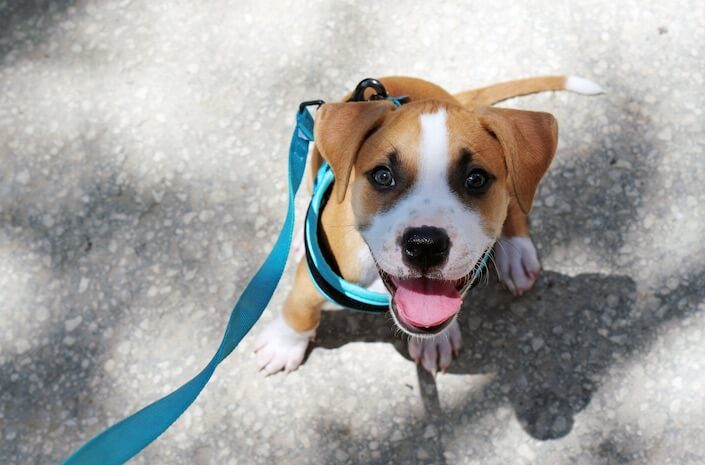
As we’ve mentioned, a Pit Bull Boxer mix puppy can be stubborn, so they are best suited to experienced handlers who have a firm grip on training and socialization. Here are some puppy training tips to help.
Training
I’ve noticed that these dogs respond incredibly well to positive reinforcement and reward-based approaches. Hence, focus on rewarding good behavior rather than punishing the bad. For instance, if a dog is behaving well, praising and rewarding them encourages this positive behavior to continue. Punishing a dog often backfires and leads to more behavioral issues. Instead, redirecting their behavior is much more effective. Say your dog grabs a slipper and dashes off—offering a more appealing toy in exchange can be a great way to teach them what’s acceptable without creating negative associations.
Exercise
The Bullboxer Pit is super-energetic, requiring a good deal of exercise—ideally, between 60 and 120 minutes daily. They thrive in active environments. While walking or exercising your Bullboxer Pit, keeping them on a leash is wise, particularly because of various regional regulations concerning Pit Bulls and because their enthusiastic nature might not always be welcome by everyone they wish to greet. From what I’ve seen, they are adaptable to various settings, be it a bustling city or quiet hiking trails. Their intelligence and eagerness to please also make them great candidates for agility and flyball, though it’s important to check if there are breed restrictions at the venues you’re considering.
Mental Needs
Addressing the mental needs of a Bullboxer Pit is just as crucial as their physical exercise. These dogs are bright and quick learners, which means they need mental stimulation to stay content. I recommend engaging them with puzzle toys, obedience training, and even scent work, which can keep their minds active and sharp. These activities not only challenge them mentally but also strengthen the bond between you and your dog.
Socialization
Proper socialization is key for a Bullboxer Pit. Starting from a young age, exposing them to various people, environments, and other animals can help ensure they grow into well-adjusted adults. I’ve noticed that well-socialized Bullboxer Pits are more confident and less likely to display fear-based aggression or anxiety. Regular visits to dog parks, busy streets, and different social gatherings are great ways to socialize them, as long as you keep a close eye on their interactions and ensure they’re always feeling secure and positive about the experiences.
Pitbull Boxer Mix Health Issues
I’ve learned that while crossbreeds often benefit from hybrid vigor, they are not immune to genetic disorders. This blend of the Pit Bull and Boxer is susceptible to several health conditions that potential owners should be aware of.
Hip Dysplasia
Hip dysplasia is a common condition I’ve seen in larger breeds, and unfortunately, the Bullboxer Pit is no exception. This condition involves an abnormal development of the hip joint, which can cause a varying degree of pain and lameness. From what I understand, it’s often hereditary, exacerbated by factors such as excessive growth rate, types of exercise, and improper weight and nutrition. Early diagnosis and treatment are crucial to managing this condition and can include options ranging from lifestyle adjustments to surgical intervention.
Allergies
Allergies are another health issue that can affect the Bullboxer Pit, ranging from reactions to food to environmental allergens like pollen, or even fleas. Symptoms often include excessive scratching, which can lead to more severe skin infections if not addressed. In my conversations with other dog owners, I’ve learned that identifying and eliminating the allergen can be a lengthy process but is essential for the dog’s comfort and health.
Thyroid Issues
Thyroid issues are particularly common in Boxers and can be passed down to Bullboxer Pits. These problems can either involve an overproduction or underproduction of thyroid hormones, leading to conditions like hypothyroidism or hyperthyroidism. Signs that I’ve learned to watch for include changes in weight, energy levels, and coat health. Thyroid problems are typically manageable with medication once properly diagnosed by a veterinarian.
Aortic Stenosis
Aortic stenosis is a serious congenital heart defect that is often found in larger dog breeds and can affect Bullboxer Pits. This condition involves a narrowing of the exit of the left ventricle of the heart, which can cause the heart to work harder to pump blood. Symptoms might not always be obvious, but they can include fainting or even sudden death. If there are signs of fatigue or unusual breathing patterns during exercise, it’s something that should be checked out immediately.
Cardiomyopathy
Cardiomyopathy, which involves the deterioration of the heart muscle and its ability to pump blood effectively, is another health concern in these dogs. Over time, it can lead to an enlarged heart with poor function. The symptoms I’ve seen include lethargy, rapid tiring, and sometimes coughing, particularly after exercise. It’s a severe condition that requires veterinary attention to manage the symptoms and progression of the disease.
Degenerative Myelopathy
Lastly, degenerative myelopathy, a progressive disease of the spinal cord, can occur in the Bullboxer Pit. This condition typically appears later in life and gradually worsens. Initially, it may cause weakness in the hind limbs, which I’ve noticed can lead to difficulty in walking or maintaining balance. As it progresses, it can lead to paralysis. There’s no cure, but management involves supportive care to maintain quality of life.
FAQs about the Pitbull Boxer
What is the average lifespan of a Bullboxer?
The average lifespan of a Pitbull Boxer mix typically ranges from 10 to 14 years. Proper care, good nutrition, and regular veterinary check-ups can help maximize their life expectancy.
How big does a Bullboxer get?
A Pitbull Boxers usually grows to be about 50 to 80 pounds and can stand anywhere from 17 to 25 inches tall at the shoulder. The exact size can vary depending on which parent breed they take after more.
Are Pitbull Boxer mixes good with children?
Bullboxers are generally known for their loyalty and protective nature, making them good family pets when properly trained and socialized. However, due to their size and energy, supervision is recommended around younger children to prevent accidental injury.
What kind of grooming do Pitbull Boxer mixes require?
Bullboxers have short coats that are relatively low maintenance. Regular brushing, about once a week, should be sufficient to keep their coat healthy. They also require the usual grooming, including nail trimming and ear cleaning, to maintain overall health.
Do Pitoxers need a lot of exercise?
Yes, Pitbull Boxer mixes are highly energetic and require ample exercise to stay healthy and happy. They typically need at least an hour of vigorous exercise each day, such as walking, running, or playing in a secure area.
Loyal, Energetic, and Highly Trainable
The Pitbull Boxer Mix is truly a smart and dependable friend. With their high energy levels, they really shine in active households. I’ve seen that when they’re trained and socialized well, they can adjust beautifully to any family setup and are fantastic with kids of all ages. Just a heads-up though, their boisterous nature might accidentally knock over small children, so it’s wise to focus some training efforts on managing their exuberance early on.
It’s important to check your local laws to see if there are any restrictions on owning Pitbulls. If you’re in the clear, having a Boxer Pitbull Mix around means enjoying a playful, bouncy, and incredibly loyal companion.
Let us know your thoughts about this breed below!
Other American Pit Bull Terrier and Boxer Mixes
If you’re interested in learning about other American Pit Bull Terrier mixes or boxer mixes, check out the hybrid dog breeds below.
American Pit Bull Terrier Mixes
- Pitbull Dachshund Mix
- Rottweiler Pit Bull Mix
- Pit bull Lab mix
- Pit bull Chihuahua Mix
- Pit Bull Mastiff Mix
- Pitsky


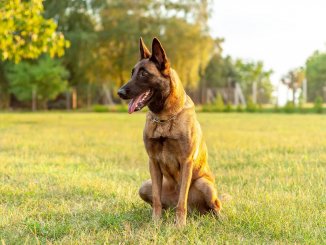

We have a 3 yr old female boxer/pit mix. She’s the very best companion I’ve ever had!! It didn’t take her long to train us either! Lol I heard her telling her friends that we are very smart & trained easily! Lolol. Her name is Samantha; she’s a gorgeous fawn girl.❤🐾❤🐾❤🐾
We have a 6 year old boxer/pit mix. His name is Han Solo, because the kids say he has a brown vest/jacket and a white shirt on Like Han Solo from Star Wars. We have 2 sons one is 15 and the other 4. Solo is very protective and a bit pet aggressive. We wont let other dogs come near. We have a routine where we play catch 2 times a day and he will bring us his ball and give a yap when he is ready. We will get another Boxer/Pit mix because they have been the best for our family.
I have a bullboxer mix. Her name is Sadie. We’ve had her for several years. When she was younger, she would chew up things when we were gone. We got her toys, but she had no interest in them. Now, she’s fat and lazy. I’m not complaining or anything. We have enough hyperness with our brindle pitbull and our (maybe)Rottweiler mix, but I’m still a little concerned about it!
I had a stafy pitmix that died 13 years. I adopted a boxer pitmix (8 yrs old). He has white blue eyes, a little brown mark over eye. Healthy except skin issues.
We just adopted a 6 month pitbull/boxer mix from our local shelter. His name is Oliver and he’s the biggest baby and loves to snuggle on the couch, sit on our laps throughout the day or and run and play. He loves to meet new people and other animals and is very energetic. He’s a little hard to train though.
We have a 5 year old blue nose rescue (she was a bait dog) and 2 days ago we “adopted” a 1 ½ year old boxer pit. He was found on a very busy street chasing empty food bags/containers. My pit (Chloe) was very anxious and becoming depressed (excessively so since I tore a ligament and pandemic hit)and we were so lucky that her new little brother joined us.She is 64# and he’s about 45#. They play all day (we have a doggie door and a huge back yard) and he takes his cues from her. He also does this hop/jump thing over her when he’s worn her out, which is hysterical and she likes to grab his harness on his chest and pull him. He’s curious about our cats but seems to sense that the 3# kitty is the alpha, lol. We haven’t named him yet, but he will have a meaningful name. Eventually. He is the sweetest dog (so is our other one).Neither gets food aggressive and my pit loves my grandkids, 10months to 8 years old(we can ALL can take food out of her mouth) , and I’m sure Nameless will love any baby, kid,too. He does like to take my shoes, 1 blanket, and the remote, though he doesn’t chew any of it. I’m so excited these 2 have each other (in addition to making our family bigger). They have been incredible companions, especially as I have lost 3 people within next week. They have been wonderful companions.